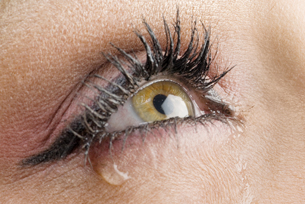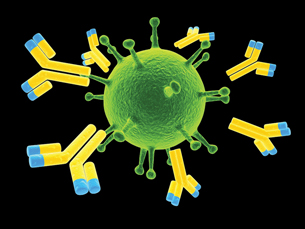Module 8 Intro
1. Module 8 Intro
1.32. Page 3
Module 8—Circulation, Immunity, and Excretion

© Anna Dzondzua/shutterstock
The Defence System
Your body is constantly under siege by a variety of micro-organisms. These organisms are looking to enter and establish a home in which to live and reproduce. Many of these foreign invaders are harmless. However, a large number of these bacteria, protozoa, fungi, and viruses are pathogenic—or dangerous—and may even be deadly to the body.
The human body uses a number of protective mechanisms to defend itself from these potentially hostile pathogens. The first line of defence is to deny the micro-organisms entry into the body.

© carlo dapino/shutterstock
The skin is a continuous barrier that prevents access. The epithelial (surface) cells of the skin protect against the billions of organisms you are exposed to on a regular basis. There is additional support at potential weak spots in people’s external covering. For example, tears and eyelashes protect the eyes, cilia and mucus protect the respiratory tract, and stomach acid protects the digestive system. Together, these defences repel the vast majority of pathogens.
As effective as the physical and chemical barriers of the body are, there may occasionally be a breach in the defence system. When pathogens are provided access to people’s internal systems by breaches such as cuts or scrapes, the second line of defence is called into action. Macrophages and other phagocytotic cells surround and engulf the invading pathogens. This is a non-specific defence, or cell-mediated immunity, which include neutrophils, monocytes, and T-cells.
The T-cells involved in the cell-mediated (non-specific) immune response are specialized to perform a number of functions. Helper, killer, suppressor, and memory T-cells all play specific roles. They not only defeat pathogens but also ensure that the body is protected from further infections. By ridding the body of pathogens, the lymphatic system and immunity maintain homeostasis.
cell-mediated immunity: involves the activation of white blood cells, specifically macrophages, neutrophils, monocytes, and T-cells rather than the production of antibodies
helper T-cell: arises from the thymus
These T-cells recognize an antigen on the surface of an invading pathogen and stimulate B-cells to produce antibodies.
killer T-cell: also known as a cytotoxic T-cell
It kills other target cells, such as cells infected with viruses, parasites, or cancer. These T-cells monitor all the cells of the body and are ready to destroy any cells that express foreign antigen fragments on the surface.
suppressor T-cell: slows and suppresses the process of cellular immunity to ensure that normal tissue does not get destroyed
memory T-cell: a lymphocyte that carries receptors for a specific foreign antigen encountered in an earlier infection or through vaccination; it quickly promotes an immune response if the same antigen is re-encountered in a subsequent infection
 Watch and Listen
Watch and Listen
Watching the following four animations may help you visualize how immunity works. You do not need to watch all of the animations:
- The following animation, “Battles in the Bloodstream,” shows how white blood cells work together to initiate an immune response to an invading pathogen.
- Click on “Cytotoxic T-Cell Activity Against Target Cells” to see how killer T-cells come to identify viruses that have invaded regular cells.
- “Constructing Vaccines” illustrates how injecting inactivated or weakened strains of a particular pathogen stimulates the body to create antibodies.
- “IgE Mediated (Type 1) Hypersensitivity” shows, at the cellular level, how people become allergic to or are affected by certain pathogens. IgE stands for immunoglobulin E, which is an antibody that plays an important role in allergic reactions. Immunoglobulin is just another word for antibody. The animation makes reference to mast cells. You have been previously introduced to mast cells as basophils or eosinophils.
The Third Line of Defence

© Sebastian Kaulitzki /shutterstock
The third line of defence is antibody-mediated immunity. Antibodies in the bloodstream will recognize foreign substances and act to neutralize or destroy them.
Antibodies are “Y” shaped molecules. The amino acid sequence in the tips of the "Y" varies greatly among different antibodies. This variation of amino acids makes the antibody specific for particular antigens. Think of an antibody as a cellphone number and an antigen as the person you are calling. The 10-digit cell number is specific to the person you are calling. An antibody is specific to an antigen.
Antibodies contribute to immunity in three main ways: They can prevent pathogens from entering or damaging cells by binding to antigens; they can stimulate the removal of a pathogen by macrophages and other cells by coating the pathogen; and they can trigger direct pathogen destruction by stimulating other immune responses.
For example, antibodies will bind to surface antigens on an invading bacterium. This can prevent the bacteria from entering and damaging healthy cells. The antibodies can also attract macrophages to engulf and destroy the bacterium. Thirdly, the antibody may stimulate a response where granulocytes (basophils, eosinophils, or neutrophils) will release their toxic granules and killer T-cells will release toxic molecules that ultimately results in the destruction of the invading bacteria.
Symptoms of this kind of reaction include swelling, fever, pus, or redness and indicate infection. Symptoms of infections, however, indicate that the immune system is working to regain homeostasis.
 Read
Read
You may want to continue to read pages 293 to 295 of the textbook before you attempt the following activities. “Figure 8.27” on page 294 provides a clear illustration of your body’s immune response.
 Try This
Try This
TR 1. An Immune Response
Your body exhibits two types of immune response. Go to your Lesson 5 Assignment to complete an activity that explores immune responses.